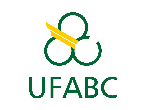Banca de QUALIFICAÇÃO: WILLIAM ROCHA FREIRE OLIVEIRA
Uma banca de QUALIFICAÇÃO de MESTRADO foi cadastrada pelo programa.STUDENT : WILLIAM ROCHA FREIRE OLIVEIRA
DATE: 14/09/2023
TIME: 09:00
LOCAL: on-line
TITLE:
INFLUENCE OF THE HEAT TREATMENT ON THE MICROSTRUCTURE AND MECHANICAL PROPERTIES OF MARAGING C300 STEEL OBTAINED BY SELECTIVE LASER MERCHING (FSL)
PAGES: 70
BIG AREA: Engenharias
AREA: Engenharia de Materiais e Metalúrgica
SUBÁREA: Metalurgia Física
SPECIALTY: Propriedades Mecânicas dos Metais e Ligas
SUMMARY:
This master's thesis investigates the influence of heat treatment on the microstructure and mechanical properties of Maraging C300 steel obtained by Selective Laser Melting (FSL). The objective is to understand how heat treatment affects the characteristics of the material, in order to optimize its application in different industrial sectors. The Additive Manufacturing (AM) process of metallic parts provides greater freedom for the design of products with complex geometry and, thus, allowing the manufacture of parts with optimized weight; Application examples include medical prostheses, aerospace turbine blades, molds and dies, etc. In the SLM (selective laser melting) process, the construction direction has an important impact on the properties of the final part. Among the influenced properties are surface roughness, microhardness, microstructure, among others. The main objective of this work is the study and characterization of pieces manufactured by the Laser Powder Bed Fusion (LPBF) technique of class 300 maraging steel, analyzing from the properties of the metallic powder to the possible thermal treatments to which they can be submitted after manufacture, in order to to improve its mechanical properties, with Vickers hardness being analyzed at positions 0° and 90°, in addition to wear tests, resistance to impact and compression. In this work, we sought to present a study of wear on maraging steel developed by additive manufacturing using Direct Metal Laser Sintering, using a high power density laser beam for melting and melting metallic powders. Short aging treatment was given to the specimen prior to wear tests. The density and hardness of the 3D printed maraging steel were better than the homogenized aged C300 maraging steel. Wear resistance is an important aspect that influences the functionality of components. Dry wear tests were performed on maraging steel in a standard pin/disk wear testing machine. The design of the experiments was planned and executed based on the response surface methodology. This technique is employed to investigate three influence and control constraints, namely velocity, load and sliding distance. It was observed that sliding speed and normal load significantly affect specimen wear. Statistical optimization confirms that normal load, sliding distance and speed are significant to reduce wear rate. Confirmation testing was performed with a 95% confidence interval using ideal parameters for validating the wear test results. A mathematical model was developed to estimate the wear rate. Experimental results were compared with projected values. Wear test parameters for minimum and maximum wear rate were determined.
COMMITTEE MEMBERS:
Presidente - Interno ao Programa - 1282172 - ROBERTO GOMES DE AGUIAR VEIGA
Membro Titular - Examinador(a) Externo à Instituição - RODRIGO DA SILVA - UFSCAR
Membro Titular - Examinador(a) Externo à Instituição - RONALDO CÂMARA COZZA
Membro Suplente - Examinador(a) Interno ao Programa - 1893637 - ALEJANDRO ANDRES ZUNIGA PAEZ
Membro Suplente - Examinador(a) Externo à Instituição - RICARDO FLORIANO - UNICAMP




